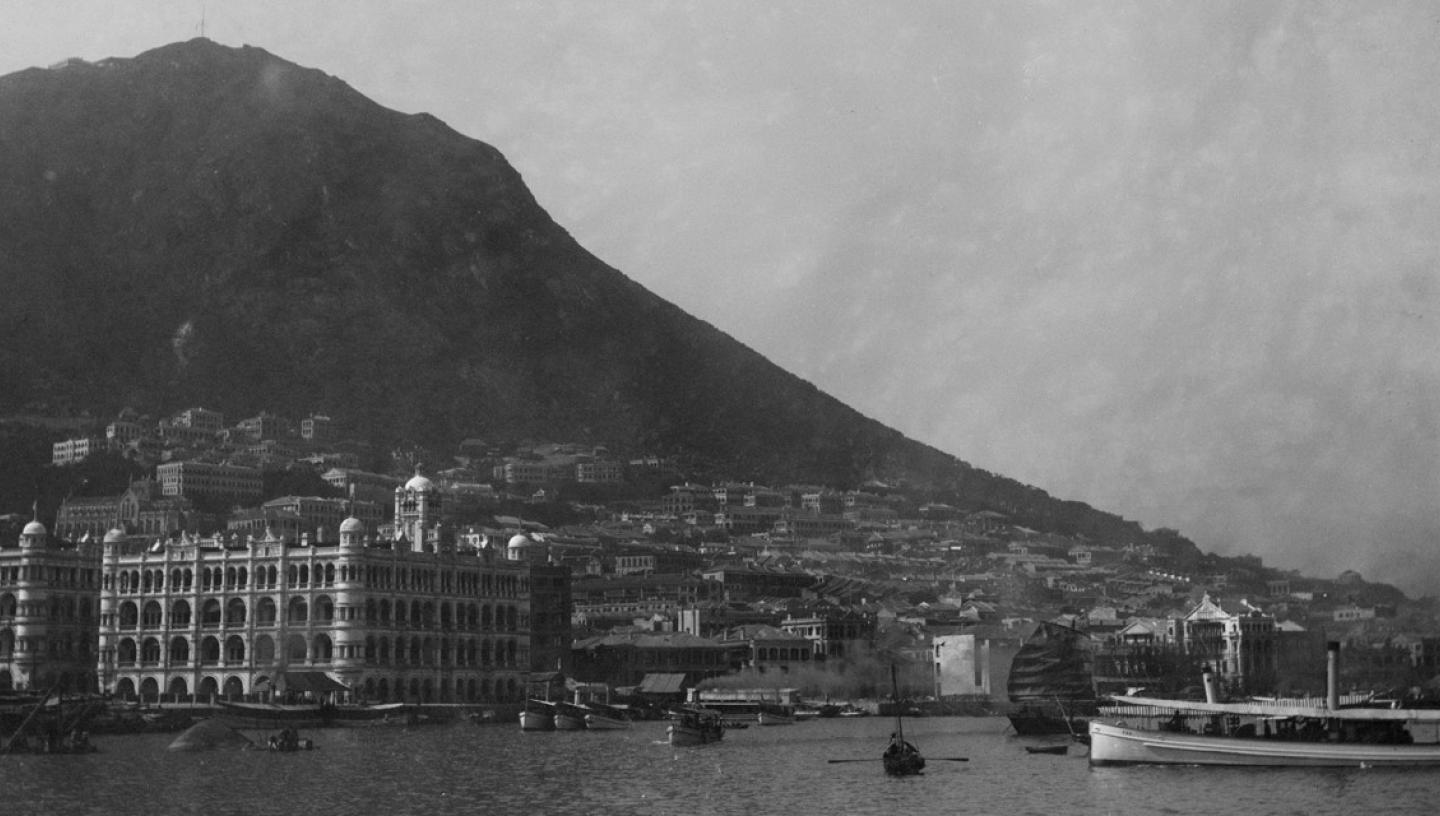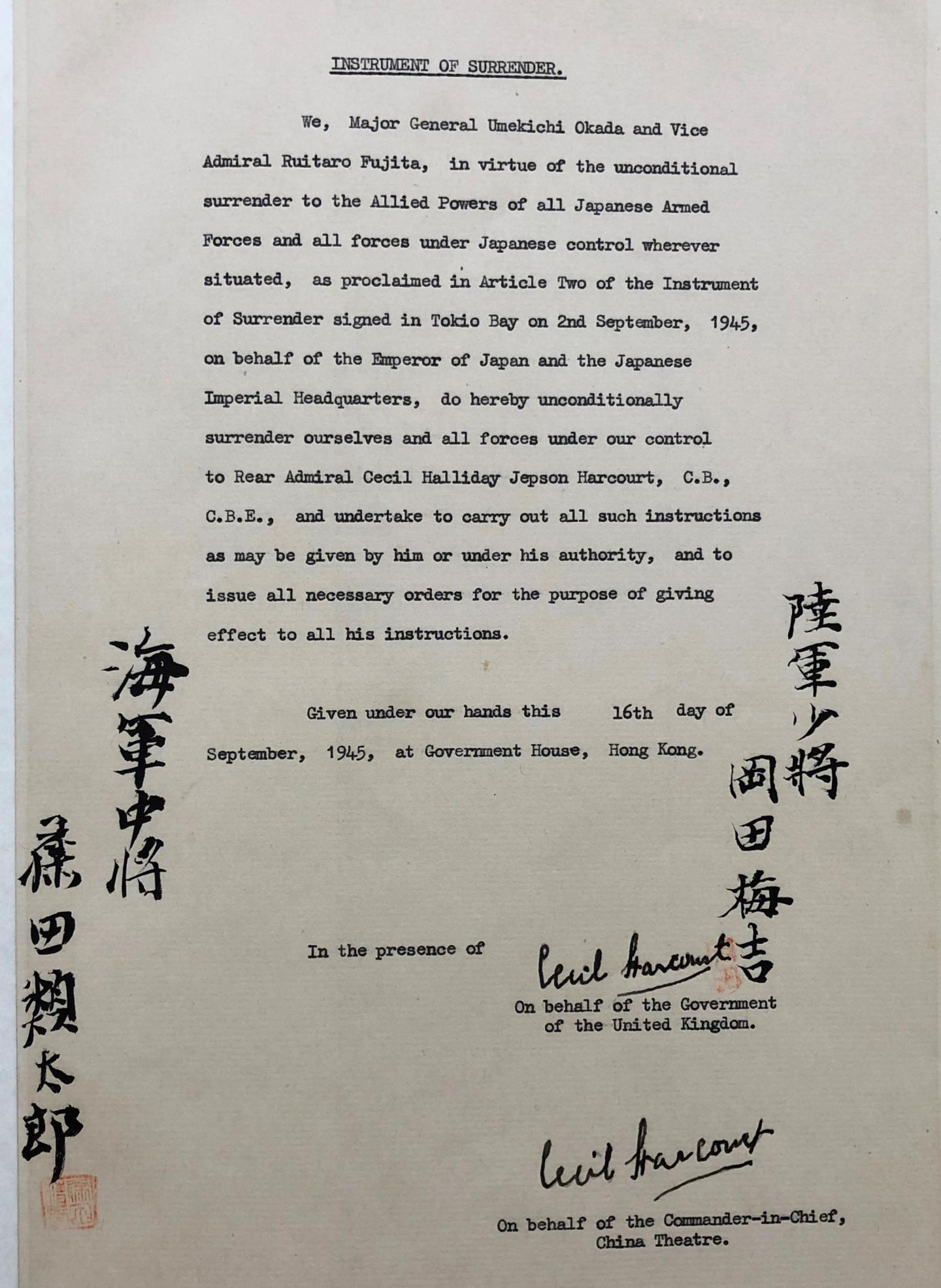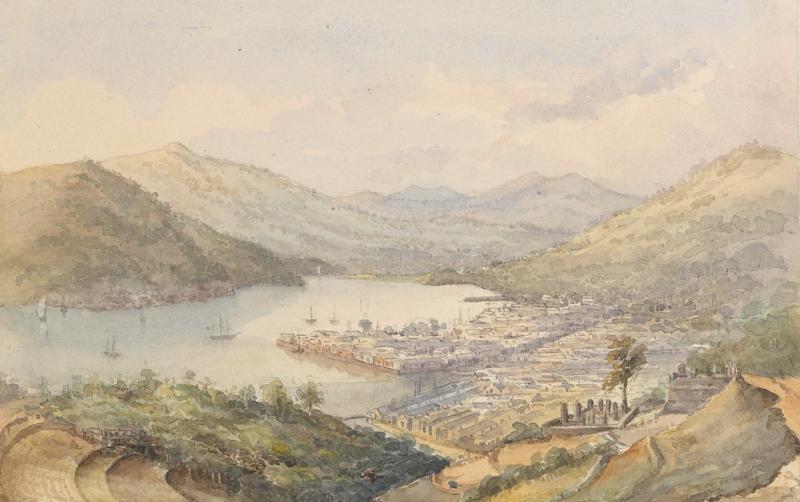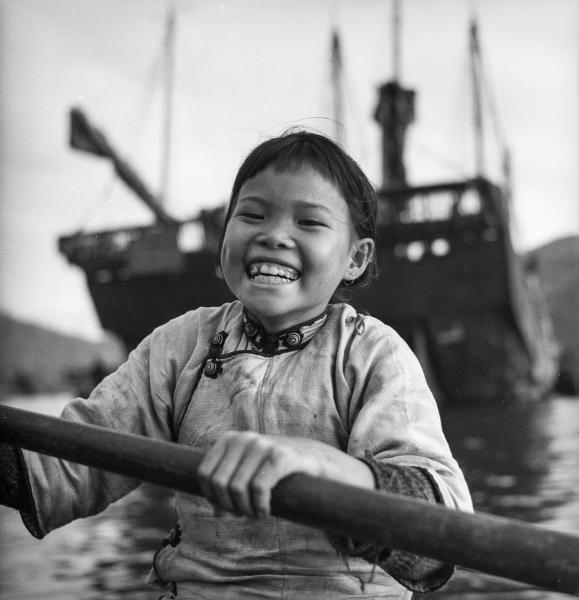
This month we take a look at an item from the Historical Records Collection of the Caird Library and Archive: the Instrument of Surrender of the Japanese forces at Hong Kong.
The Instrument of Surrender, relating to the Japanese forces in Hong Kong (HSR/V/8), was signed by Rear Admiral Sir Cecil Halliday Jepson Harcourt on behalf of the Allies and Major General Umekichi Okada and Vice Admiral Ruritaro Fujitia, on behalf of the Japanese Empire, dated 16 September 1945.
After the Japanese surrender, China had assumed Hong Kong would come under Chinese rule; nevertheless the British acted quickly and assumed control. Following a distinguished naval career, Rear Admiral Cecil Halliday Jepson Harcourt (1892-1967) was knighted in December 1945, retiring from the Navy in 1952.
The Japanese attacked Hong Kong hours after striking the American naval base at Pearl Harbour, Hawaii. The British garrison and the local defence force attempted to halt the Japanese, however they were overwhelmed by the sheer number of the enemy. Subsequently, to save lives, surrender was the only option.
By 1941-42 the Japanese celebrated victory after victory and expanded their empire and influence. However, the Japanese failed to sink the American aircraft carriers which were at sea during the attack on Pearl Harbour, which would be a major factor in the Pacific war.
When the Japanese capitulated in 1945, Vice Admiral Ruritaro Fujitia surrendered his sword - known as a tachi (military fighting sword) - to Rear Admiral Harcourt. It is now part of the Museum's collections (WPN1185).
This sword was manufactured in 1942 in an arsenal and retains the rank tassel at the grip. The Japanese held their swords in high regard and were reluctant to surrender them. In many armed forces the sword was a ceremonial item, however the Japanese carried the sword into battle and if the opportunity arose it would be used.
Swords could be family items, handed down the generations, in certain instances several hundred years old, created by a master swordsmith. The swords carried by the Japanese were sought by American servicemen. Few understood the historical significance of the old swords in comparison to the modern arsenal items, many of which were made using steel from railway tracks.
It is believed at one point the Americans had obtained such a large quantity of swords they were being taken out to sea and ditched over the side. Official presentations of swords were also made to American servicemen. One man could be presented with a modern factory sword, yet another could be handed a sword of great age and the highest quality.
Over the passage of time most surviving swords have probably been accounted for, and only time will tell if more are to be discovered in attics and lofts.



